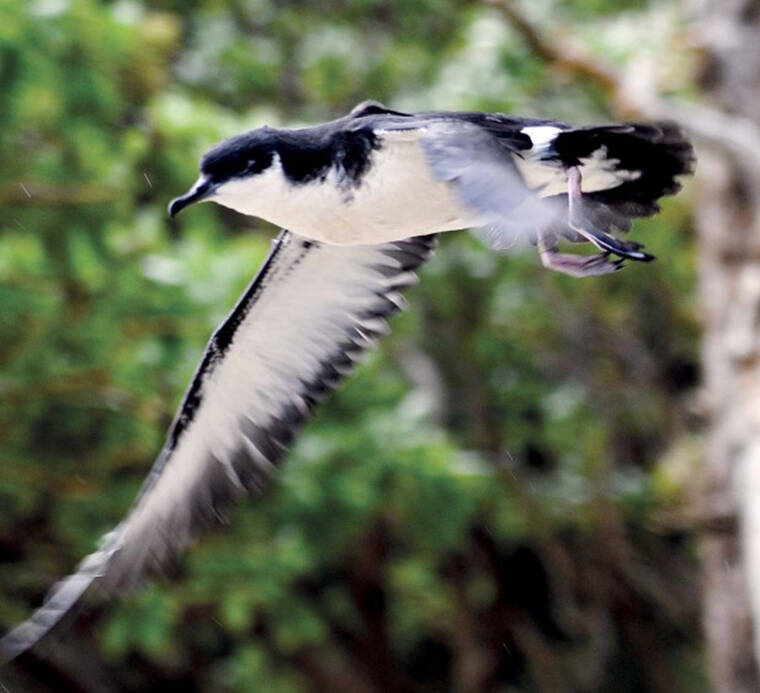KOKE‘E — The U.S. military is offering more than $250,000 for federally endangered seabird conservation efforts on Kaua‘i.
A Department of Defense grant notice shows the U.S. Army Corps of Engineers, Alaska District, will pay up to $257,753 for the work supporting the 611th Civil Engineer Squadron, owner of the Koke‘e Air Force Station.
The U.S. Fish and Wildlife Service completed a “biological opinion” on the station in 2017, issuing requirements related to the island’s threatened and endangered bird species, following events that occurred during the 2015-16 breeding season.
“More than a dozen Newell’s shearwaters were inadvertently taken and more than 100 were injured,” the DOD grants notice reads. “During the same series of ‘fallout’ events at least one Hawaiian petrel was taken.”
Artificial lighting at the station, which is a radar site, is cited as the suspected cause of the birds’ disorientation.
The 611th Civil Engineer Squadron subsequently installed a walking-path light system to be used when seabirds are nearby, and the Koke‘e Air Force Station is now expected to take approximately four seabirds per year.
In seabird and government parlance, a “take” is any unintentional killing or injury of endangered species.
The new grant will promote compliance with the biological opinion through on- and off-site predator control and monitoring activity, to better gauge the Air Force station’s impact on seabirds.
“The act of predator control is viewed by the biological community and conservation biologists as beneficial to improving seabird colony size and population resilience,” according to DOD. “The species to be targeted shall include rats, cats, feral dogs, pigs (where appropriate) and barn owls.”
The grant awardee will conduct on-site bird monitoring activities from April 1 through Dec. 30, using at least three detection and surveillance methods.
Remote seabird colonies outside the Koke‘e station area will be monitored using “song meters” deployed by helicopter in May and recovered in August.
“Call rates will then be compared with call rates from previous years’ surveys … to assess whether call rates are the same, have increased or decreased,” the notice of the grant explained. “As call rates are directly related to the number of breeding birds on the ground, a change in call rates can be used to assess breeding numbers of birds in these areas.”
The endangered-seabird grant application period closes on March 10. It will be awarded on or about March 25.
•••
Scott Yunker, reporter, can be reached at 245-0437 or syunker@thegardenisland.com.



We demand that the US Military leave Hawai’i for the future generations of indigenous species to survive.
HAWAIIANKINGDOM.ORG